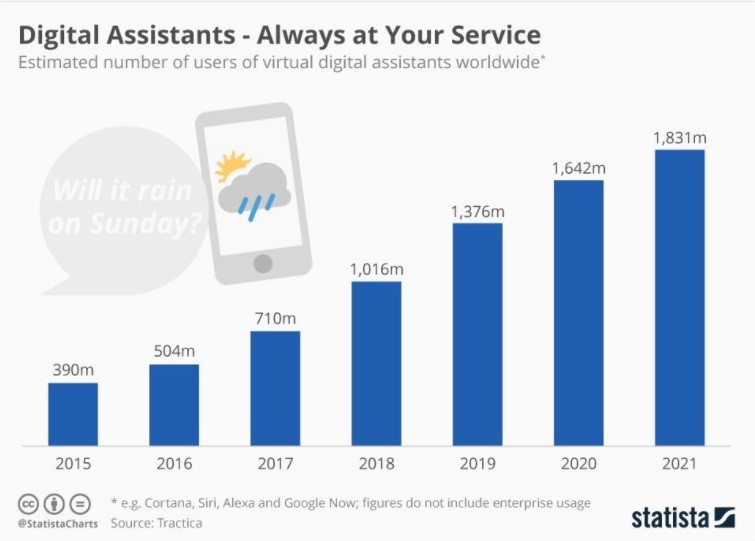If you are running an online service or e-commerce store, chances are you offer automated online chat. Aware of the growing buzz surrounding chatbots, you might well be considering adopting one. But halt a moment before you decide and consider a virtual assistant instead…
Few people realize that chatbots and virtual assistants (VAs) are actually very different. The ignorance is entirely excusable. Both technologies have left the early stage of development and are now viable for business use. Both have a sort of artificial intelligence and employ a sort of Machine Learning. And both seem to be growing more sophisticated by the day. But while chatbots may be quite useful in set industries and applications, the future lies with virtual assistants powered by machine learning algorithms and AI. Why?
The very nature of chatbots limits their capabilities. Each chatbot is in a sense anchored to a limited function its makers programmed it to fulfill. Chatbots are suitable for single purpose applications like customer support, customer engagement, or automated purchases. They cannot range across into the vocabulary and jargon typical of any other function. (Well, in truth, they could, but making them do so would be too complex and expensive.) Universal chatbots would not make sense until the technology has become so cheap, the average business owner could afford an all-encompassing business bot.
Now, a virtual assistant is very different. From the outset, the technology behind virtual assistants enables them for much broader use. It allows sophisticated applications in everyday use and for business. What early virtual assistants lacked were workable AI algorithms and machine learning capabilities. An up-to-the-minute virtual assistant, however, should even be capable of tasks like doing research and comparing products, among other quite surprising abilities.

Importantly, virtual assistants’ ability to comprehend natural language now allows them to receive complex spoken commands in various languages and dialects. Stanford University AI researchers published a recent paper on what they call socially equitable natural language processing (NLP). An NLP tool would greatly improve comprehension of regional dialects, slang, or the natural way people talk when they regularly speak more than one language. Such tools would allow virtual assistants to perform even more tasks with greater accuracy, and without needing keyboards or touchscreens. Okay, chatbots can recognize voice commands too, but their comprehension is stone age by comparison, and injecting them with the advanced technology would be challenging and costly.
We are used to the adage that ability comes at a cost, yet virtual assistant prices are not at all daunting. Devices like Google Home and Amazon Echo start at upwards of $130: more affordable than middling class smartphones. On the other hand, virtual assistants like Apple’s Siri, Microsoft’s Cortana, and Google Assistant are built into mobile devices, in a sense coming “free” with them. All take advantage of AI and machine learning. All are built with mobility in mind, and although we can use them on desktops, they remain a mobile-first technology. Combined with accurate natural language capabilities, each of them marks a breakthrough over any chatbot.

Personalizing virtual assistants, a serious consideration with some users, is no longer an issue. Machine learning also allows chatbots to become personalized, but to a lesser extent and at the expenditure of much greater effort due to their inherent imperfections. Deleting an internet browser’s history, for Instance, can erase all chatbot customization, all the way to the bot failing to recognize its master – even though the bot might operate in the cloud, for Instance. Virtual assistants, by contrast, sail relatively effortlessly through such issues.
Deep learning will expand the range of services provided by virtual assistants further. It will also help chatbots, incidentally. Nonetheless, the future of AI and machine learning applications is in VAs. They are more suitable for covering diverse personal and business uses.
Do not rush to implement a chatbot or VA, though! Riding the chatbot tide might be tempting, but only a handful of bots can give you a good run for your money right now. Jumping on the VA bandwagon is more promising, but be aware that virtual assistants still need a few more years to become a feasible business solution. Ultimately, both chatbots and VAs depend on developments in AI and machine learning, so following trends there should enlighten us best, whether we belong to the chatbot or VA camp.
By Kiril V. Kirilov





